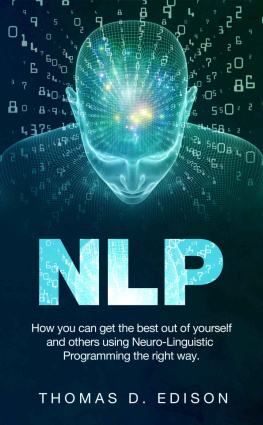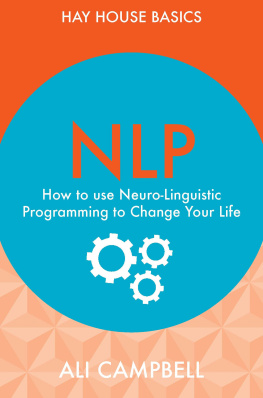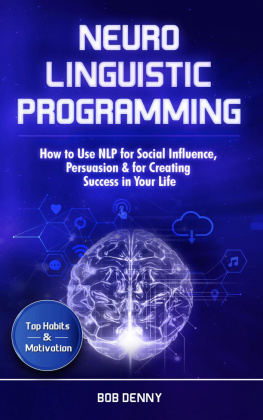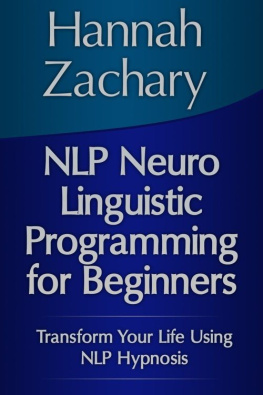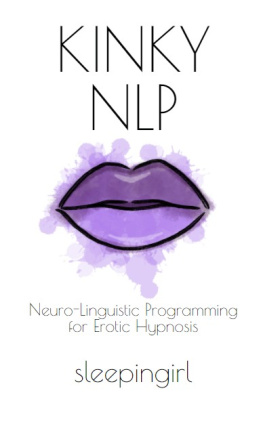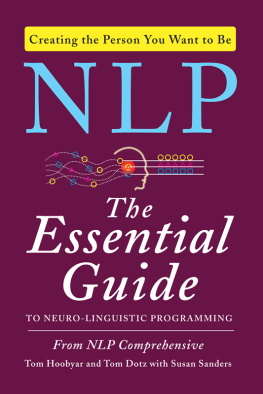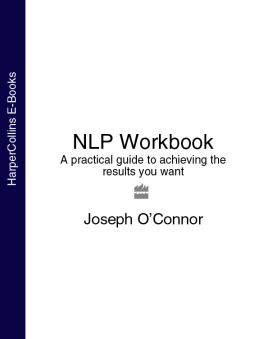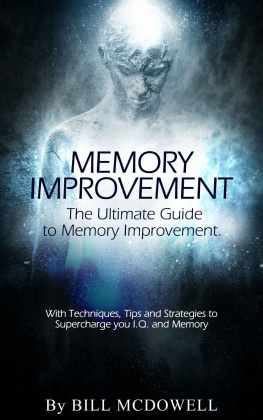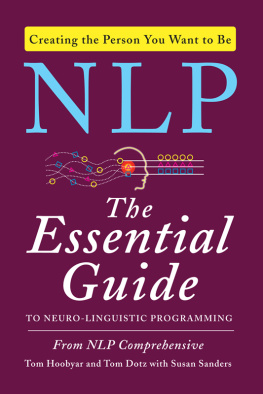NLP: How you can get the best out of yourself and others using Neuro-Linguistic Programming the right way
By Thomas D Edison
Copyright 2016 WE CANT BE BEAT LLC
Table of Contents
Chapter 1
Introduction
We are all looking for ways to understand how we work. It is our nature to think about thinking, but sometimes it gives us a headache because the rabbit hole is very, very deep. This book will hopefully give you a better understanding of how and why you react a certain way through looking at how language and expression can influence you, just as Morgan Freemans voice makes some people go silly. Neuro-Linguistic Programming can help shed some light on why we are more musical than arty or how we can use language more efficiently and to better effect. Why waste your breath on a one-hundred-word phrase when five words will get your point across better and more to the point, it will stick. If you stick with it, you will improve your chances at achieving what you need to achieve, because you will learn how to break things down to the raw components.
What is Neuro-Linguistic Programming?
Neuro-Linguistic Programming is a psycholinguistic model that can help build rapport, change opinions, plant ideas, overcome mental disorders and facilitate personal growth amongst other beneficial functional uses, according to its creators Bandler and Grinder (1976). It is based on the idea that behaviour can be altered or influenced through manipulation of neurological processes, all of which are connected to linguistic representations in the verbal store in the long term memory and in the phonological loop where language is silently rearticulated in the working memory. It sounds like a magical miracle cure for deep-set, difficult to treat psychological conditions, but is it all top hats and bunny rabbits? It is largely dependent on other theories that refer to the unconscious mind as a powerful tool such as Ericksons work on medical hypnotherapy and Gestalt therapists perceptions of how people achieve a positive mind frame. Because of this it is impossible to unequivocally assess its usability. But it has been tested under controlled conditions and has yielded surprising results which seem to support the notion that it is helping people to better process difficult to digest information and achieve personal goals.
What are the problems?
There is a huge debate over whether it should be taken seriously or not. Counter theorists say there is nowhere near enough quantitative or qualitative data to make such wild claims. Supporting theorists claim that the results that they have complied are evidences in itself of the functionality of NLP. So it is experiential research that is the driving force behind the NLP model. It is not going to escape pseudoscientific status whilst the supporting evidence is so thin but it has proven to be a useful tool for a great many circumstances. And that was all it was intended to be. A mental model will always stumble over irregularities because the mind is a phenomenon yet to be fully understood so we cant apply limiting factors to fully control experiments. If we take a positivist stance however, and consider the regularities as meaningful (which they usually are) then we may just make some headway ( Bandler, and Grinder, 1976).
You may have heard of various Neuro-Linguistic Programming techniques such as lie detection by tracking eye movement. The one that claims that if someone is looking up and to the right, he or she is lying, up to the left and it is the truth. There is some logic behind this idea, as it refers to the eyes gazing into the part of the brain that is responsible for memories or creations, but its unlikely that many would use this technique when sniffing out a cheater as there are just too many ifs and buts surrounding it. The problem with NLP techniques is that there is little empirical evidence to support the model which they use, just a whole lot of people demonstrating its usefulness. The creators themselves, Bandler and Grinder openly made a point of this issue when they presented their findings by stating that they are not psychologists, theologians or theoreticians; they have no idea about the true nature of mental representations and they are not interested in proving their theory. But that didnt stop a new wave of psychologists, neurologists, linguists and anthropologists creating a quasi-religion dedicated to exploring and developing the model that Bandler and Grinder came up with. And they came up with some good stuff ( Bandler, R and Grinder, J, 1976).
How can you use it?
NLP has such overwhelming support from different fields of study because the applications for NLP are infinite. It is up to the enthusiasts to prove its worth as a standalone theory, independent of other, more renowned works by testing it as a vague hypothesis in situations where language can be used to influence behaviour.
In therapy, psychotherapists have used NLP techniques to reach their patients on an unconscious level in order to make lasting changes in their psyche. As knowingly accepting psychotherapeutic techniques could be counterproductive due to the emergence of counterarguments against the treatment, it is important for patients to be in an open and malleable state of mind. Psychotherapists have NLP tricks up their sleeve that help make patients more susceptible to their influence as well as techniques based on the model to talk to their patients subconscious. Such problems as phobias, family feuds, anxiety and depression are but a handful of potential aspects where NLP can be of use and lasting change is an area in which NLP seems to be particularly helpful. Change in patients way of harmful thinking is demonstrated in other techniques such as exposure and positive association to a stimulus, but with techniques of NLP there is notable longevity of change. Patients are less likely to return to the self-detrimental behaviour if they are affected on an unconscious level because they arent directly aware of how the change has happened and thusly cannot undo it. There are however limitations when using NLP in a psychotherapeutic context as it depends largely on the psychiatrists ability and the patients willingness to commit to the treatment. In extreme cases of trauma for instance, a patient is required to recall the painful experience that caused the trauma in order to get better, but in some of these cases the trauma is so severe that a patient will continue to repress the memory rather than recall it, continuing the cycle of internal torture.
Similar to the way psychiatrists use NLP to influence the change of a negative behaviour pattern, advertising agencies use NLP to prey on the unconscious mind of the consumer in order to get them to buy their product. Enter the darker side of Neuro-Linguistic Programming. Where one can bend anothers will with mild suggestive action or plant an idea unbeknown to the interlocutor. This has been born out of the constant need for fresh marketing techniques as capitalism grows exponentially. In traditional advertising, most of the focus was rather one sided, highlighting all the positive factors of a product. But over time, as the public responded better to more rounded, less biased, entertaining adverts, advertising agencies were forced to up their game and develop new techniques such as those of NLP in order to compete with rival brands, who sold pretty much the same product which usually suffered from the same downfalls. Rather than focusing on the vibrant colour schemes that famously attract a younger audience, NLP in advertising focuses on the captions and slogans of the brand, as well as the dialogue in some cases. They cleverly reframe a potential pitfall of the product as a desirable attribute under the right circumstances. The audience is invited to look past the negative and consider the beneficial aspects of having to deal with a prevalent feature obviously detrimental to the product image.
Next page
